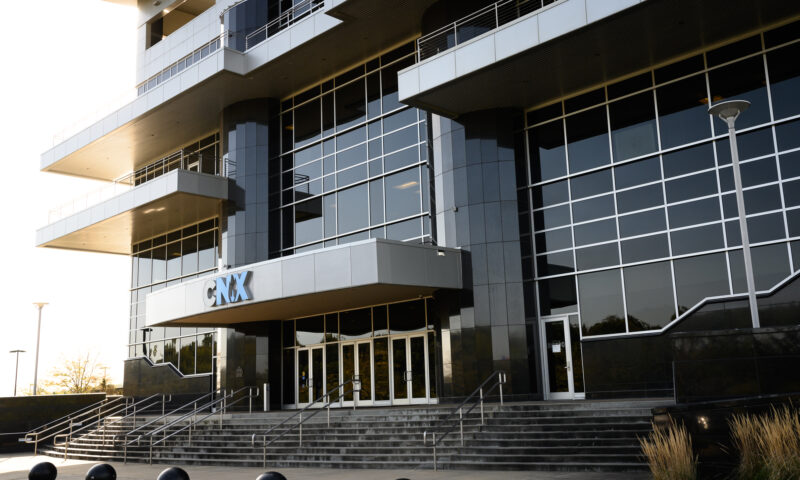California’s housing crisis didn’t begin on Gov. Gavin Newsom’s watch. But it’s fair to wonder whether Newsom will be able to claim any significant progress in the area he’s made so central to his agenda by the time he leaves office in early 2027.
That’s not an indictment of Newsom. It’s an acknowledgement of the intractability of the state’s housing shortage. Despite years of attention from Newsom and his predecessors, the gap between the number of new units needed and what’s being built, which first became noticeable in the 1970s, has widened in every decade since.
In Newsom’s almost seven years as governor, he has signed dozens of bills designed to jump-start the production of housing. That includes some potentially consequential measures signed into law this year to streamline construction and regulatory processes and increase housing density near major transportation hubs.
But as a new report from the state Legislative Analyst’s Office makes clear, Californians’ ability to afford homes is not improving. The office, which acts as California lawmakers’ nonpartisan fiscal and policy adviser, found that home prices and their accompanying mortgage payments have run away from residents over the past five years, making homeownership more elusive than ever.
It’s no surprise that reality lands hardest on lower-income families. The LAO’s report found that since 2020, monthly payments for a starter home in the state — defined by the office as being in the bottom third of home values — have increased nearly 80%, to more than $3,400.
At that level, the LAO says, mortgages are so far above the average rent of about $2,100 that they’re essentially unattainable. Wages haven’t come close to keeping up.
The result: Lower-income California families, nearly 50% of them Latino, continue to rent instead of owning, and thus don’t start building the home equity that others have long used to create generational wealth. So continues the cycle.
* * *
The newest laws are worth watching, in part because they are some of the biggest swings at increasing housing that California lawmakers have taken under Newsom’s administration.
Two bills signed into law as part of the state budget were heavily pushed by Newsom. Each of them eases the review standards for home and apartment builders under the California Environmental Quality Act in an effort to encourage quicker housing production, especially in urban areas.
“I thank the many housing, labor, and environmental leaders who heeded my call and came together around a common goal — to build more housing faster, and create strong affordable pathways for every Californian,” Newsom said in a statement after signing the budget in June. “Today’s bill is a game changer, which will be felt for generations to come.”
A third law Newsom signed, by state Sen. Scott Wiener (D-San Francisco), allows apartment developers to build high-density, taller complexes right around train, rail and subway stations in major population centers regardless of local zoning ordinances. The legislation faced pushback from both Democrats and Republicans for, among other things, overriding the local planning decisions of city governments. Both the Los Angeles City Council and L.A. Mayor Karen Bass opposed it.
Still, it’s an open question whether these new laws will deliver meaningful results. Efforts through the years to increase housing production have often stalled, and Newsom’s stated goal in 2017 of developing 3.5 million housing units by 2025 never came remotely close to playing out. The governor’s latest intention is to produce 2.5 million new housing units by 2030, long after he’s out of office.
Meanwhile, rapidly increasing interest rates and the already insufficient supply of homes in California have compounded the problem, according to the LAO’s report. For a mid-tier home in the Golden State, the average payment in September was $5,536 a month.
There’s another issue, one that no state law could successfully address. The current rates on home loans mean many longtime California homeowners are reluctant to move, since they’d face higher payments if they made a lateral purchase or even downsized somewhat. That further restricts the number of houses for sale from the state’s tight stock.
* * *
In a statewide survey conducted in October, the Public Policy Institute of California found that more than four in 10 respondents were concerned about not having enough money to pay their rent or mortgage — and higher levels of concern were reported among people making less than $100,000 a year. That’s the housing crisis in a thimble. High prices, high interest rates and low inventory combine to squeeze the market in every direction — especially for lower-income earners.
California’s official Statewide Housing Plan cites the 2.5 million figure that Newsom’s office has set as a goal, adding that a million of those units should meet the needs of lower-income households. The plan also acknowledges the cold reality of that challenge: A third of California households don’t earn enough to pay for their basic necessities right now.
Both the state and individual cities have passed laws increasing wages for some workers. Another answer to that affordability gap has always been more housing, while the political debate has centered on how — and under what circumstances — that building should occur. It’s a dynamic California lawmakers have struggled with and vowed to overcome for decades now.
Yet over the past 30 years, California’s rate of homeownership has barely changed, running a solid 10 points below the national average, while Black and Latino Californians continue to own homes at starkly lower rates. Even after all this time, the state’s latest attempts to do something about the housing affordability crisis feel like only a start.
Copyright Capital & Main 2025


 Pain & ProfitNovember 3, 2025
Pain & ProfitNovember 3, 2025
 Column - State of InequalityNovember 6, 2025
Column - State of InequalityNovember 6, 2025
 Latest NewsOctober 29, 2025
Latest NewsOctober 29, 2025
 Latest NewsOctober 22, 2025
Latest NewsOctober 22, 2025
 Column - State of InequalityOctober 23, 2025
Column - State of InequalityOctober 23, 2025
 Column - California UncoveredOctober 24, 2025
Column - California UncoveredOctober 24, 2025
 Latest NewsOctober 31, 2025
Latest NewsOctober 31, 2025
 The SlickNovember 5, 2025
The SlickNovember 5, 2025

